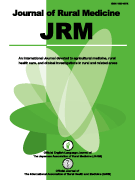Volume 18, Issue 1
Displaying 1-7 of 7 articles from this issue
- |<
- <
- 1
- >
- >|
Review
-
2023Volume 18Issue 1 Pages 1-7
Published: 2023
Released on J-STAGE: January 06, 2023
Download PDF (808K)
Original article
-
2023Volume 18Issue 1 Pages 8-14
Published: 2023
Released on J-STAGE: January 06, 2023
Download PDF (1025K) -
2023Volume 18Issue 1 Pages 15-20
Published: 2023
Released on J-STAGE: January 06, 2023
Download PDF (920K) -
2023Volume 18Issue 1 Pages 21-27
Published: 2023
Released on J-STAGE: January 06, 2023
Download PDF (670K) -
2023Volume 18Issue 1 Pages 28-35
Published: 2023
Released on J-STAGE: January 06, 2023
Download PDF (582K) -
2023Volume 18Issue 1 Pages 36-41
Published: 2023
Released on J-STAGE: January 06, 2023
Download PDF (576K) -
2023Volume 18Issue 1 Pages 42-49
Published: 2023
Released on J-STAGE: January 06, 2023
Download PDF (1216K)
- |<
- <
- 1
- >
- >|
